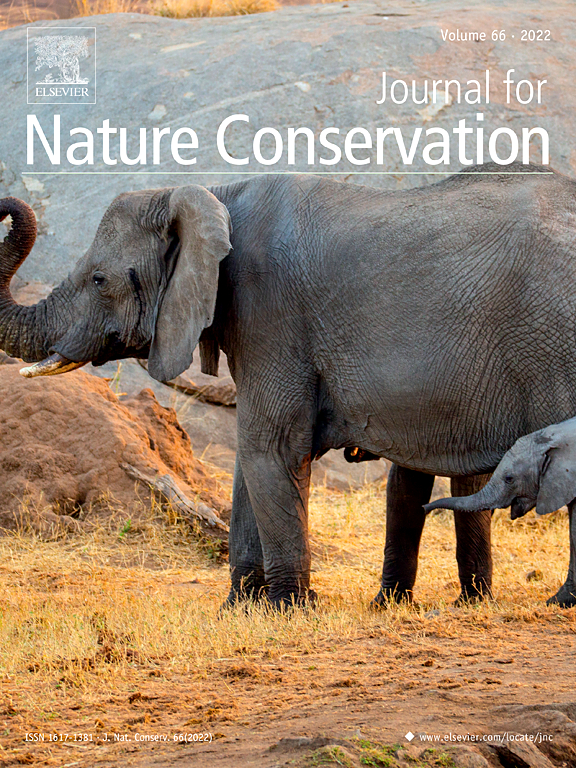Ver ítem
- xmlui.general.dspace_homeCentros Regionales y EEAsCentro Regional Patagonia SurEEA Santa CruzArtículos científicosxmlui.ArtifactBrowser.ItemViewer.trail
- Inicio
- Centros Regionales y EEAs
- Centro Regional Patagonia Sur
- EEA Santa Cruz
- Artículos científicos
- Ver ítem
Linking species distribution and territorial planning to the management of the endangered Gonopterodendron sarmientoi in native forests of the Chaco region, Argentina
Resumen
For management and conservation strategies in the long term is necessary to know the species distribution and main biophysical aspects that determine the structure and dynamics of the forest. The aim of this work was to determine the potential and current spatial distribution of Gonopterodendron sarmientoi, an emblematic and endangered tree species of the Dry Chaco. A further aim was to superimpose the distribution of G. sarmientoi, with the zonation in
[ver mas...]
For management and conservation strategies in the long term is necessary to know the species distribution and main biophysical aspects that determine the structure and dynamics of the forest. The aim of this work was to determine the potential and current spatial distribution of Gonopterodendron sarmientoi, an emblematic and endangered tree species of the Dry Chaco. A further aim was to superimpose the distribution of G. sarmientoi, with the zonation in the current Territorial Planning of Native Forests (OTBN, its acronym in Spanish) to provide basic information for conservation and management of the species. For this, a Maxent model was developed to quantify the relationship between G. sarmientoi occurrence and key environmental variables (including water,
topography, and climate as a variables). G. sarmientoi’s habitat was mainly influenced by precipitation variables, and secondarily by temperature variables. Considering the OTBN defined by the local forest authority, of the current area of G. sarmientoi (2,477,009 ha), the majority (57.9%) corresponded to the yellow category (forest areas with medium conservation value) and only 10.6% to the red category (high conservation value). It is important to note that around 600,686 ha (24.3%) of native forest with G. sarmientoi is in the green category (low conservation value) subject to change in land use, and 178,107 ha was uncategorized forest (7.2%). For effective
management and conservation strategies, the current habitat distribution map of G. sarmientoi provides decisionmakers an opportunity to review and adjust the native forests zoning at a provincial scale within the framework of the OTBN, mainly the green category (legal deforestation) with the occurrence of the endangered G. sarmientoi.
[Cerrar]

Autor
Peri, Pablo Luis;
Gaitan, Juan Jose;
Loto, Dante;
Kees, Sebastian Miguel;
Azcona, Maximiliano;
De Tellería, Santiago;
Teich, Ingrid;
Manghi, Eduardo;
Camps, Gonzalo Andrés;
Fuente
Journal for Nature Conservation 68 : 126220. (August 2022)
Fecha
2022-06-11
Editorial
Elsevier
ISSN
1617-1381
Formato
pdf
Tipo de documento
artículo
Palabras Claves
Derechos de acceso
Restringido
 Excepto donde se diga explicitamente, este item se publica bajo la siguiente descripción: Creative Commons Attribution-NonCommercial-ShareAlike 2.5 Unported (CC BY-NC-SA 2.5)
Excepto donde se diga explicitamente, este item se publica bajo la siguiente descripción: Creative Commons Attribution-NonCommercial-ShareAlike 2.5 Unported (CC BY-NC-SA 2.5)

